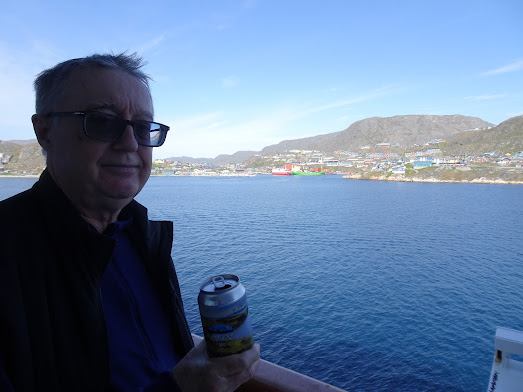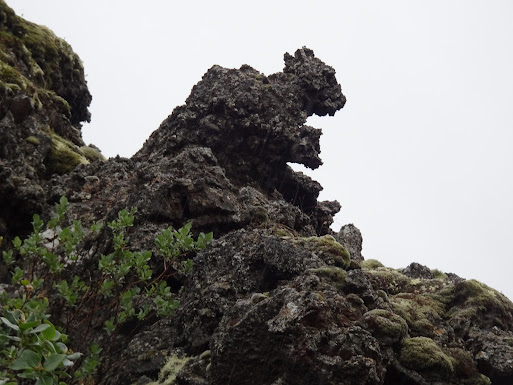Our overnight sail was a little rough but we arrived in
Akureyri, the "Capital of North Iceland", which is an important port
and fishing centre. The area where Akureyri is located was settled in the 9th
century. It has a milder climate, and having an ice-free harbour is
important. In the early 21st century, fishing industries have become more
important. It has one of the warmest climates in Iceland, despite being only
100 km from the Arctic Circle.
We had a long bus tour today. We visited the majestic Godafoss
Waterfall, and despite the photos, it was very windy and wet. Bone-chillingly
freezing; even our eyeballs felt chilled! You cannot really convey the degree
of cold in the photographs.
I think my thumb is frozen.
Brrr...it so cold maybe these are called the God-forsaken Falls?
The Hverir Geothermal
fields are here with their boiling mud pools and fumaroles give a lunar landscape
appearance. Missing from the photograph, is the charming smell of rotten egg
gas!
There was
the Dimmuborgir lava field where every second column is meant to be a troll. You
are limited only by your imagination! It was a pleasant enough 20-minute walk. But
anyway, is this a squirrel?
This is
the smallest lava tube I have ever seen, but at least they have one.
We couldn’t
see too much of Lake Mývatn from the bus, because of the rain and cold
(Icelandic summer?). One bonus was that with the midges which can be really bad
in summer were not around.
Pseudo-craters
are craters that do not have a magma chamber underneath. When they were formed
it was like a bubble bursting. They are dotted around the place.
I guess
this is a beach. (But with ponies.)
We had
lunch at a local hotel. A tomato soup and a main course of Arctic Char
(freshwater salmon) which was delicious with salad and baby potatoes. It was
finished off with coffee and a chocolate. We then journeyed home well-watered
and fed.
We have been told that we won’t be leaving port today as
they have seas of 5 metres. With the delay in sailing, we won’t be going back to Ísafjörður, but luckily,
we had done our tours there already. Unfortunately, the people who joined the
cruise at Reykjavik will miss out completely.
We had a talk on The Game of Thrones which was very
interesting, even though we have not been fans of the TV series. The author of
the books has been criticised on the grounds that his plot lines are
unrealistic. But he has drawn heavily on actual historical events, from many
different country’s histories, for plot lines. The author himself has said that,
“He files off the serial numbers of history”.
One of the women from our bus was complaining that it was
the worst tour she has ever done and she seemed to be quite agitated. Yes, it
was windy, wet, cold and unpleasant but the ship does a great job of explaining
what is involved with physical activity, the weather and what to wear. There is
no such thing as bad weather, only bad clothing choices. I went down to Guest Services
to give them some positive feedback on the trip, in case that woman complained
to them.

















































